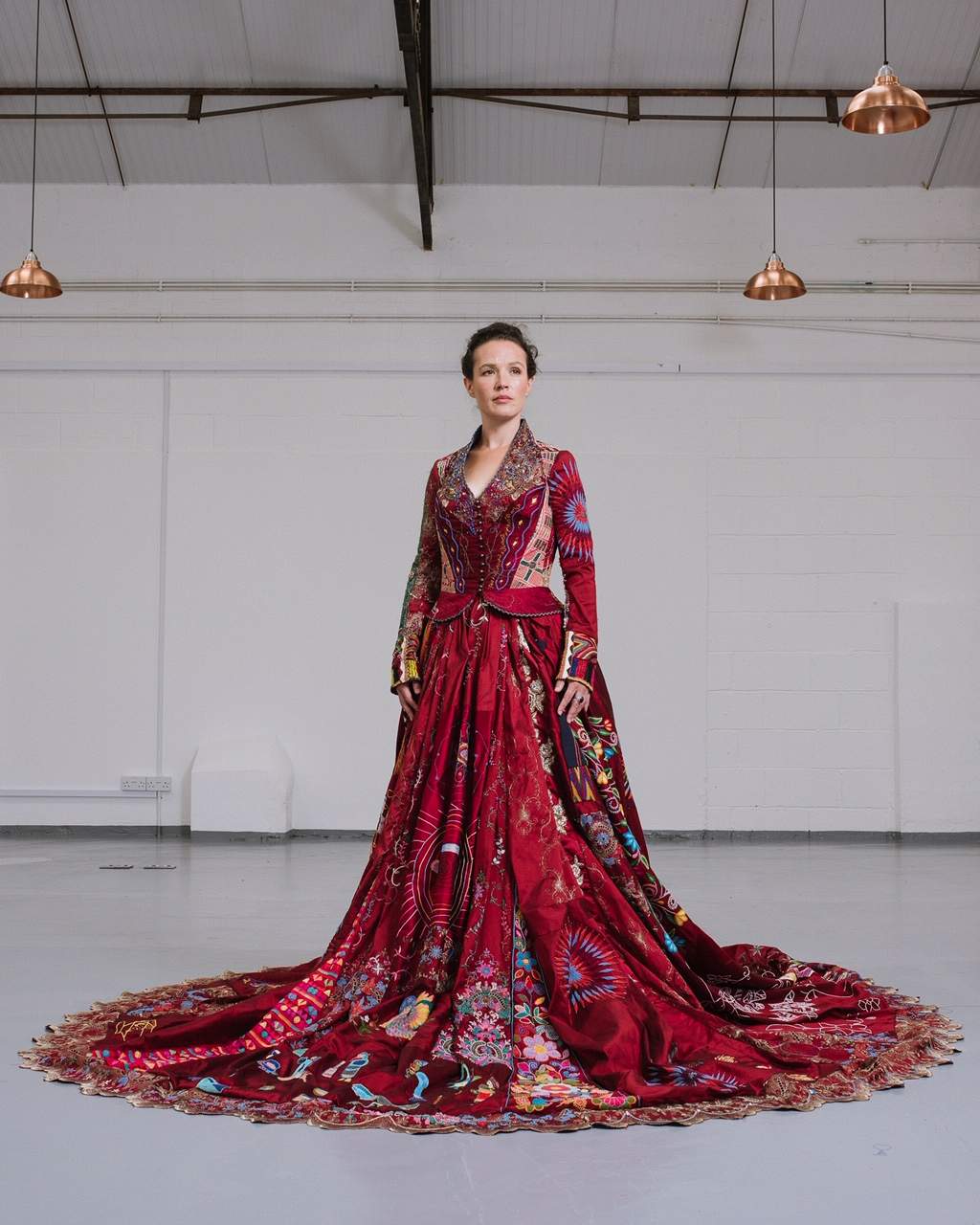Will the ‘Red Dress’ that has roamed the world ever land in Pakistan?
For the last 10 years, British textile artist Kirstie Macleod’s ‘Red Dress’ has been worked upon by more than 200 artists.

This article first appeared on our partner site, Independent Urdu
A few days back, I stumbled upon a red dress while scrolling through Facebook. The dress was lovely to look at but it was the story behind it that really captured my interest.
This search led me to Kirstie Macleod, the creator of this dress who lives in Somerset and through her unique projects, she not only promotes art in the textile industry but also expresses herself through aesthetic embroidery.
The ‘Red Dress Project’ is a perfect example of this initiative, where more than 202 artisans from 28 different countries have put their embroidery skill to work. The project also includes artists from Pakistan.
Started in 2009, this global red dress has been worked upon by embroidery artists from Pakistan as well as artists who were Palestinian refugees, victims of the civil war in Congo, Bedouin women from the Sinai desert in Egypt. Textile artists from South Africa, Kosovo, Rwanda, Kenya, Japan, Paris, Sweden, Peru, India, Saudi Arabia, Wales and Columbia also added their touch.
Kirstie Macleod said she wanted to create an artwork that would allow different identities to come together without prejudice and boundaries, and would act as a platform where women could express themselves, feel independent and their voice heard.
Speaking to Independent Urdu, she said: "In 2009, I received funding from the British Council in Dubai to create artwork for the Art Dubai Fair, and this paved the way for the project. During this time, I also received some donations from art collectors and embroidery-lovers, but in the last five years, most of the work has been funded by myself.”
"Unfortunately, budget constraints meant that I couldn't always take the dress myself, so dress panels were sent to artisans to work on and then they sent them back to me to the UK”, says Ms Macloed.
She has managed the project all by herself, but at the start and towards the end she had some help from Gail Faulkner, a pattern cutter, to cut and assemble the dress. Over the past ten years, additional clothing panels were received resulting in the dress being reassembled several times.
In 2019, work on embroidering the dress was completed. This fabric is not only adorned with millions of different stitches, threads and pearls, but also has within its folds collective voices and individual stories to tell.
Will this red dress also come to Pakistan?
When asked if the dress would be exhibited in Pakistan, Kirstie said: "I would be very happy if it did. Pakistan is represented in this project by Sania Samad, so it would be very appropriate to exhibit the dress there.”
Sania Samad has been living in New York for the past 15 years and is a graduate of the National College of Arts in Lahore. When contacted by Independent Urdu for comment, she said: “I found out about this project through the website and I contacted Kirstie myself because I was surprised that it had no representation from Pakistan, at which point Kirstie invited me to join the project.”
"The Red Dress project experience was very interesting. To me, this project is like making and promoting history through embroidery”, says Sania.
Sania's beautiful work on this dress is inspired by Indian author Arundhati Roy's novel The Ministry of Utmost Happiness and Pakistani poetess Zehra Nigah's poem 'Compromise'.
Sania said that Arundhati’s novel and Zehra’s poem inspired her to create this artwork. "My artwork features an image of a tunic, which is a kind of metaphor for women, while the embroidered image depicts a paradise where women will be treated with respect and there will be no discrimination on the basis of gender.”
Sania further added that she has also painted pictures of Pakistani, American and British flags, reflecting the countries where she has lived.
She also expressed her hope that one day the dress will be exhibited in Pakistan.
Translated by Taimur Rehman, Edited and proofread by Tooba Ali & Celine Assaf
Subscribe to Independent Premium to bookmark this article
Want to bookmark your favourite articles and stories to read or reference later? Start your Independent Premium subscription today.

Join our commenting forum
Join thought-provoking conversations, follow other Independent readers and see their replies